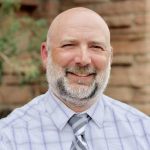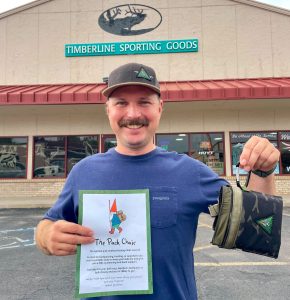Roberts column: What we accomplished in the special session
Guest column
Normally, late August is a time for enjoying the last weeks of summer and getting the kids back to school. However, for the second year in a row, the Colorado Legislature found itself spending late August inside the Capitol in Denver.
Last year it was to lower property tax rates. This year, we were called back to the Capitol for a special session to address a nearly $800 million budget shortfall. This shortfall was caused by the passage of H.R. 1, President Donald Trump’s “big beautiful bill,” which significantly reduced state revenue just days after Colorado’s new fiscal year began. Both Democrats and Republicans agree that the special session was necessary once H.R.1 was signed into law because Colorado is one of only four states that links its state tax code to the federal tax code.
Unlike Congress, Colorado’s Constitution requires a balanced budget and we cannot “overspend” nor keep a surplus due to the constitutional requirements in the Taxpayer’s Bill of Rights (TABOR). In April, the general assembly passed a bipartisan, balanced budget that cut $1.2 billion. When our fiscal year began on July 1, our state’s finances were balanced, but when the federal tax changes were signed into law on July 4, our budget was instantly thrown out of balance by nearly $800 million, which necessitated the Legislature’s return to work.
I am a very bipartisan lawmaker who always tries to put my district over my party — I firmly believe that most policy matters are not Team Red or Team Blue, but somewhere in between. That’s why it pains me to say that there is no way around the fact that H.R.1, which was passed with only one-party support in Congress and actually received bipartisan opposition, has put our state, and every state, in a challenging position.
Its tax cuts primarily for high-income earners and large corporations will not greatly benefit working families and it will add $4 trillion to the national debt. Further, it has and will continue to require Colorado to cut services and programs that many of you rely on, that support kids and seniors, will reduce our funding for road maintenance and affordable housing, and its fallout threatens to close many health clinics and rural hospitals, which will make health care less accessible and more expensive for all.
I wish Congress would learn something from Colorado’s predominantly bipartisan legislative work and balanced budget requirement. Nonetheless, we returned to Denver to responsibly balance our state budget for the second time this year.
Closing loopholes, cutting spending
In a matter of days, we made the difficult decisions needed to address the budget shortfall. We passed several revenue-generating bills, focusing on closing outdated corporate tax loopholes and ensuring a fair tax structure, although I personally did not vote for all of them. We also directed the governor to identify up to $300 million in spending cuts with the Joint Budget Committee’s oversight, and authorized limited use of state reserves. The governor announced those deep cuts last week. These steps, taken together, ensure Colorado’s budget will once again be balanced.
Health insurance affordability
The special session also addressed the looming spike in health insurance premiums if Congress fails to extend the federal premium tax credits. To help families avoid devastating cost increases, the Legislature generated new funding for the Health Insurance Affordability Enterprise, which helps keep insurance affordable for those who buy coverage on the individual market.
Without action, average statewide premiums were projected to increase by 28% and as much as 38% on the Western Slope. This investment is projected to keep premium increases to a statewide average of 20% and protect coverage for thousands of Coloradans who rely on the Affordable Care Act marketplace for their insurance.
I am continuing to urge Congress to extend these bipartisan premium tax credits. We did what we could to blunt the immediate impact, but only Congress can ensure health insurance remains affordable and attainable.
Wolf spending
Finally, I brought forward a bill with Sen. Marc Catlin (R-Montrose) to make our state’s wolf reintroduction program more financially responsible. While the introduced version would have paused new world releases for a year, the governor made clear he would veto that approach.
The compromise we passed redirects $264,268 that had been appropriated for new wolf procurement and instead uses those funds to support the Health Insurance Affordability Enterprise. Importantly, funding for coexistence efforts and livestock compensation remains intact, while future wolf procurement must be funded from sources outside the state’s general fund.
Looking ahead
In less than a week, Colorado confronted a serious fiscal challenge and produced a responsible plan. We stabilized revenues, authorized spending cuts, bolstered state support for health insurance affordability, and adjusted wildlife management spending.
Taken together, these steps put Colorado back on solid fiscal ground, allowing us to continue funding essential services responsibly. We face more difficult decisions in the months and years ahead as we grapple with the impacts of H.R.1 and as always, I am eager to hear your thoughts. Please contact me anytime.
Dylan Roberts is the state senator for Clear Creek, Eagle, Garfield, Gilpin, Grand, Jackson, Moffat, Rio Blanco, Routt and Summit counties.

Support Local Journalism

Support Local Journalism
Readers around Glenwood Springs and Garfield County make the Post Independent’s work possible. Your financial contribution supports our efforts to deliver quality, locally relevant journalism.
Now more than ever, your support is critical to help us keep our community informed about the evolving coronavirus pandemic and the impact it is having locally. Every contribution, however large or small, will make a difference.
Each donation will be used exclusively for the development and creation of increased news coverage.









